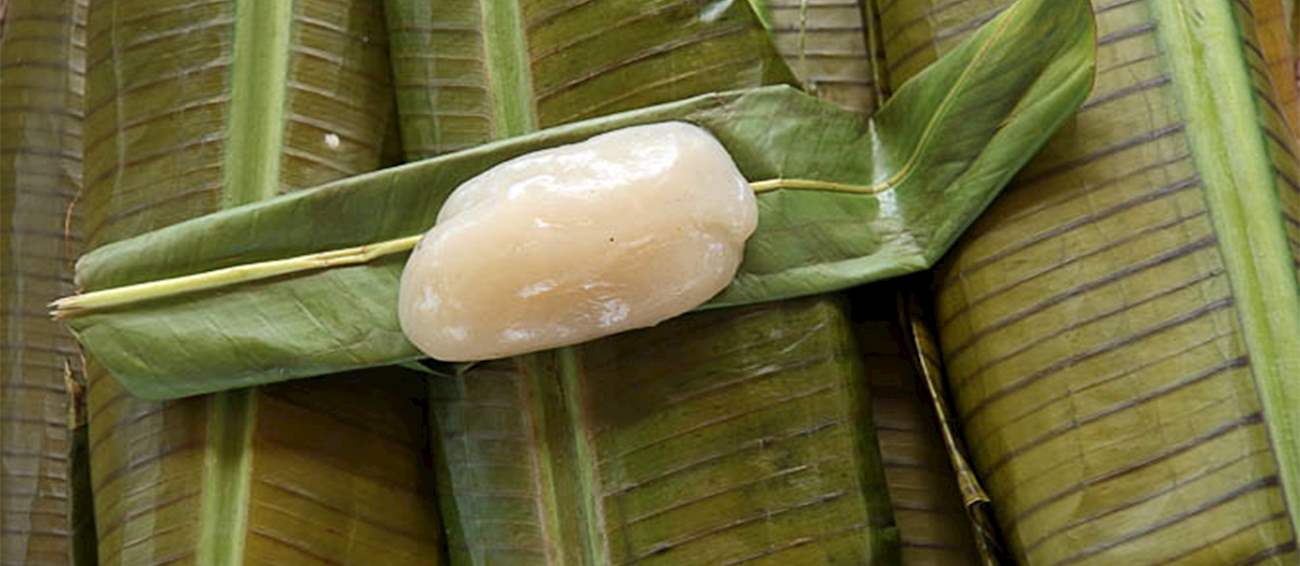Bugandi egg drop soup is a hearty and nutritious Papuan soup prepared with fresh ingredients such as spinach, spring onions, and choko (a gourd-like pumpkin) shoots. When all of the ingredients are boiled in water, an egg is dropped into the soup, hence the name.
It is recommended to serve the soup with freshly baked soda bread on the side.
Kaukau is a Papuan term that generally refers to a variety of sweet potatoes. The most popular dish made with these sweet potatoes is prepared by baking them, removing the skin, then mashing the sweet potatoes with ingredients such as coconut milk, coconut oil, garlic, ginger, cheese, eggs, or cinnamon.
The mashed combination is then typically placed back into the potato skins as a filling and baked again for a short while until the dish is ready for consumption.
Kaima bona gatoi is a savory vegetable dish from Papua New Guinea. It is usually served as an accompaniment to barbecued meat and fish. The dish is prepared by grilling eggplants, zucchini, hot peppers, and onions. Before grilling, the vegetables should be marinated in a combination of vinegar, olive oil, herbs, and garlic.
Mumu is a traditional dish from Papua New Guinea, prepared in a pit or a hole in the ground that is filled with hot stones. The pit is lined with banana leaves, and the leaves are then filled with layers of ingredients such as leafy greens, root vegetables, meat, fruit, and large quantities of coconut milk.
The whole concoction is lined with one more layer of banana leaves so that the steam doesn't escape. Preparing mumu is a laborious task, and it usually involves the whole family, both men and women, old and young.
These small, rectangular-shaped dumplings come from the coastal regions of Papua New Guinea. They are made with sago (sometimes substituted with cassava) and mashed bananas, and the combination is then wrapped in banana leaves and boiled in coconut milk.
If banana leaves are unavailable, aluminum foil is a worthy substitute. The dumplings are typically consumed for lunch or dinner.
Kol pis no rais, meaning cold fish and rice, is a simple combination of fish and rice that is commonly consumed in Papua New Guinea. It typically consists of canned fish (usually tuna) and rice, and the combination may optionally be enhanced with any available vegetables such as peas and corn.
The dish is typical for the coastal regions of the island, and it is usually enjoyed either as a snack or a main course.
Talautu is a traditional dessert that is typically served after a big meal. It is extremely simple to prepare, yet very delicious and refreshing. To prepare it, shredded coconut flesh, pineapple pieces, sugar, lemon juice, and coconut milk are combined in a bowl, then served, preferably in coconut shells.
TasteAtlas food rankings are based on the ratings of the TasteAtlas audience, with a series of mechanisms that recognize real users and that ignore bot, nationalist or local patriotic ratings, and give additional value to the ratings of users that the system recognizes as knowledgeable. TasteAtlas Rankings should not be seen as the final global conclusion about food. Their purpose is to promote excellent local foods, instill pride in traditional dishes, and arouse curiosity about dishes you haven’t tried.

